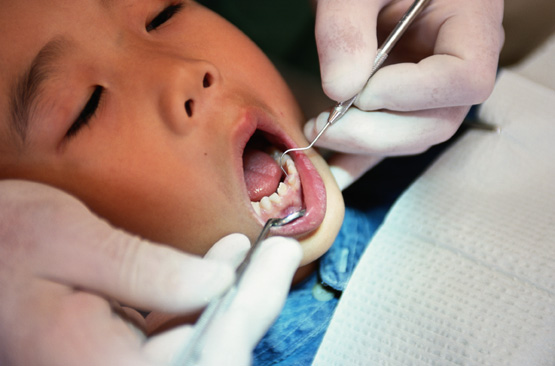Dental and orofacial injuries are common in sport, but most are preventable with proper equipment, reports a new study (1).
Injury statistics
- More than 5 million teeth are avulsed (completely displaced from their socket due to trauma) each year in the United States, costing more than $500 million to treat;

- The cost to treat an avulsed tooth over a lifetime is between $5,000 and $20,000.
- Dental injury statistics in sports are difficult to obtain. Several studies report dental injury rates in up to 80% of participants but others suggest that such injuries are relatively rare, especially in high school sports.
- Basketball, football, hockey, martial arts, and boxing carry the highest risk, but noncontact sports carrry risk as well.
- Orofacial injuries vary, with the most common being soft tissue (e.g. lacerations).
- The majority of dental trauma is tooth (crown) fracture, tooth avulsion, or tooth sublaxation (loose tooth).
Mouth guards and injury prevention
- Most studies show that mouth guards reduce dental injuries.
- The overall rate of an orofacial injury is 1.6 to 1.9 times higher when a mouth guard is not worn.
- Mouth guards use in high school and college football players significantly reduces dental injury rates.
- Not only do mouth guards help prevent orofacial injury, they significantly reduce their cost.
- Mouth guards are required by the NCAA in several sports, including men's and women's lacrosse, field hockey, and ice hockey.
- The American Dental Association and the International Academy of Sports Dentistry recommend using mouth protection for 30 activities.
- Baseball and basketball are two sports in which orofacial trauma is common, but few participants wear mouth guards.
- While some athletes claim mouth guards are uncomfortable and affect breathing and communication, there is no conclusive evidence that breathing or adequate oxygen levels are compromised, even during strenuous physical activity.
Treatment - Avulsions
- Primary ("baby") teeth should never be replanted; replanting should only be attempted for intact, permanent teeth.
- Every patient must be evaluated immediately for airway obstruction and then the injured area washed with sterile water and dabbed with guaze.
- Ideally, replantation of an avulsed tooth should occur with 5 to 10 minutes. Successful replantation is much less likely after 20 minutes of "extraoral dry time" and highly unlikely after 60 minutes
- If unable to replant immediately, the intact tooth or tooth remnants should be kept in a storage media such as (in order of preference):
- Hank's Balanced Salt Solution
- cold milk (skim milk, preferably)
- saliva (inside the patient's cheek)
- saline, or
- water.
- If the intact tooth has debris, then it should be held by its crown, rinsed with water or normal saline, properly oriented by observing the adjacent teeth, and replanted in the socket.
- Return to play is individual to each athlete. For completely avulsed teeth with no chance of replantation, the player could return within 48 hours with mouth guard protection if no bone fractures are evident.
- Players who have replantation and splinting of avulsed teeth should wait at least 2 to 4 weeks to return and only with mouth guard and face mask protection.
- Tetanus status should be determined and consideration given for booster vaccinations if indicated.
Treatment - displaced tooth
- move displaced tooth to its normal position, especially if it is interfering with bite.
- if the pulp is exposed, the tooth may have blood at the fracture site and will be sensitive to temperature and pressure. Capping the tooth with a readily available calcium hydroxide resin from a dental emergency kit is recommended until definitive dental care is provided;
- in the case of a displaced tooth with successful treatment, the player may return to play with mouth guard protection within 24 to 48 hours (there are no firmly established return-to-play guidelines)
Treatment - TMJ dislocation
- TMJ dislocation can be difficult to differentiate from a displaced mandibular jaw fracture.
- Moving the jaw back and forth side to side may reduce the dislocation. Urgent referral to a dentist or oral surgeon should be made if reduction does not occur because swelling or muscle trismus (limited ability to open mouth)
- Player may return with protection (mouth guard and/or face mask) between 2 and 4 weeks, depending on severity.
- The risk of another dislocation may be increased with a previous dislocation.
Tooth-saving kit recommended
- Proper treatment can improve outcomes.
- Prompt referral for complicated crown fractures and TMJ dislocations is "paramount."
- A tooth-saving kit is useful on the sports sideline. If not available, an avulsed tooth can be transported in milk or saliva.
1. Young E, Macias R, Stephens L. Common Dental Injury Management in Athletes. Sports Health: A Multidisciplinary Approach. 2013;20(10):1-6.








